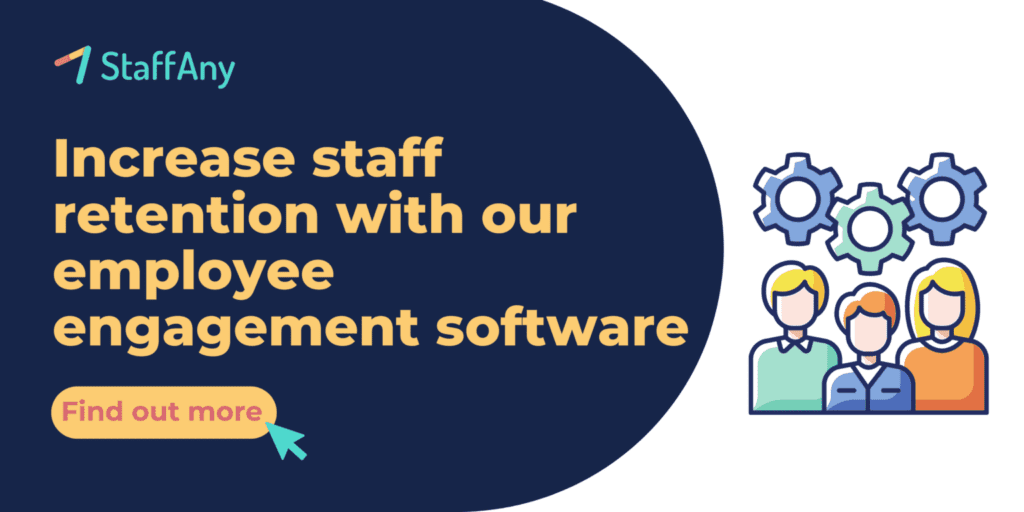StaffAny just held an event with all F&B and Retail Hr managers, proudly sponsored by Melioris. We went in-depth on the challenges that HR managers often face, their solutions, and how HR can tackle several challenges

We’re glad to have Clara Tan, an SPC Group HR leader, joining us for this session. With her experience managing outlets from Paris Baguette, her insights are helpful regarding specific challenges that are hard to tackle. Here’s what she has to say when it comes to being a HR manager:
Micromanagement Issues
Micromanagement is a common issue in many organisations. It can stifle creativity and reduce employee morale. Here are ways employees can prevent micromanagement from their bosses and improve trust between the two parties.
Employees can over-report by providing constant comprehensive updates and reports to keep their managers informed. This transparency can then reduce the need for constant supervision, which will prevent your bosses from checking up on you 24/7.
The most important point is to have proactive communication. Regular updates and open lines of communication ensure that all parties are always in the loop, preempting the need for micromanagement.
Scaling Recruitment Challenges
Recruiting the right talent is always a challenge, especially when balancing between full-time and part-time employees. These are some tips Clara mentioned to scale recruitment effectively:
Hire more flexible part-timers:
Integrate and hire more flexible part-time workers to manage workload fluctuations. Flexible part-timers refer to part-timers who do not have fixed working hours, which means they can more easily fill in for full-timers or normal part-timers. For the retail and F&B sectors, having flexible part-timers allows you to increase manpower in outlets on busier days like festive seasons.
On top of that, companies can also choose to offer higher pay for every work-hour milestone achieved. This can ensure a more competitive and motivated workforce as employees will be more willing to take more shifts. One example of this would be as such: imagine you are offering a base pay of $10 per hour for part-time employees. If the employee exceeds 80 hours in a month, the subsequent per-hour pay would be $12. This will then encourage more employees to pick up shifts when needed to scale up to earn more money,
A balanced workforce of full- and part-time employees is important, as they serve different functions. Full-timers will retain most of the operations knowledge needed to maintain and run the outlet, while part-timers are great at helping out outlets when required.
Tips to filter candidates:
But with all those mentioned above, how do you find out someone who has a suitable attitude for work? All you have to do is to include practical assessment in your interviews. Hands-on assessments during interviews can help you gauge the employee’s practical skills while also ensuring that the tasks you give them are manageable. This is an excellent opportunity to watch for any attitudinal or behavioural issues that may pose a problem to existing employees.
Tips to increase your hiring pipeline:
Finally, referral programmes should be made available to source more workers. Let your current employees, whom you trust and rely on, refer potential candidates to you and reward them for it. Referral programmes are great for both employers and employees: for employers, you need not worry too much about external recruitment; for employees, it gives them an opportunity to earn more money along the way.
Retaining Part-Time Workers
Part-time workers can be a hit or miss, and you need to attract and encourage them to work more hours to help out during store operations. Here are some ways to retain part-time workers:
Offer part-time workers pay based on key performance indicators (KPIs), attendance, and tiered pay structures. Other than the number of hours worked, you can also utilise KPIs like customer feedback and the number of sales reached, if applicable, to calculate each employee’s pay.
The working environment is also another essential factor that part-timers consider when looking for a job. To address such retention issues, leadership can be improved through trining and coaching, as managers can be taught to handle situations better and more patiently. This can lead to a more supportive and healthy work environment, improving retention rates of part-time workers.
Another way to retain part-time employees is to have regular HR chit-chat sessions with managers and employees working on the ground to gather feedback. These sessions allow HR to improve their practices and review mistakes, allowing those working on the ground to have their voices heard. These sessions are recommended to be held quarterly every year, though it depends on the HRs of different companies.
Positive Work Environment
Building a positive work environment is crucial for employee satisfaction and retention, allowing employees to work in a less stressful environment. To improve work environment, Clara recommends the following:
Hold monthly bonding activities with the team. With regular team-bonding activities, employees can get to know each other more and improve morale. This also fosters camaraderie and reduce finger-pointing when it comes to mistakes made during work. Of course, to have bonding activities, a budget is needed. When there’s no budget for bonding activities, you can highlight the long-term benefits of such investments to your boss to gain approval. If monthly is tough, try to hold one quarterly!
Other than the above, improving staff benefits such as more off-days and more flexible working hours can improve employees’ morale. Enhancing these benefits for employees can meet their needs, as some may have children that they have to accommodate. Having the flexibility to work wherever and whenever they want reduces their stress levels, as they can arrange their schedules accordingly.
Flexible Work Arrangement (FWA)
In today’s evolving work landscape, flexible work arrangements are essential. Now, most companies adopt the hybrid work arrangement, where employees are needed to work from office (WFO) for certain days, while they can work from home (WFH) for the rest of the week.
The level of practicality must be considered when implementing FWA for the company. For employees working in HR and Marketing, they may need to hold regular meetings to discuss certain workflows; hence, a WFO arrangement may be required for certain days. However, for staff in Finance, all the necessary materials that they need to work with can be found online; hence, they can adopt a full WFH arrangement.
Of course, FWA may still be the company’s new norm. Hence, regular feedback sessions are needed to gather employee input. This is so that the necessary adjustments can be made to accommodate everyone and ensure that everyone can work in a better and healthier environment.
Working with Generation Z
Generation Z (Gen Z) refers to those born from 1997 to 2011. Due to their young age, they may need more work experience; hence, some understanding has to be established between the employer and Gen Z employees as they may have different needs. For Gen Z, they value their work environment more than pure monetary cash. Managers may with to then focus on ensuring a better working environment first. However, it is also essential to interact with and understand each Gen Z employee to align those expectations.
Talk to your Gen Z employees regularly to understand their goals and aspirations. This can provide you with better insights into how they view work and its environment, allowing both parties to set certain goals and expectations during work and hence reduce miscommunication that may be faced.
Other than that, you can provide the attention and recognition they seek to keep them motivated. Gen Z employees may require more encouragement due to their new working environment, so it is important to provide them with the right amount go recognition to motivate them.

It was a very important and insightful session, and all of us really leant a lot about managing employees and the different ways to counter issues faced in the HR workplace. We would like to extend our gratitude to Clara from SPC for these wonderful learning points, as well as Melioris for sponsoring our event and making this possible!
Are you a HR manager encountering the same issues? Join our next HR session to network and learn from other HR leaders! Register your interest through the button below, and we look forward to seeing you next time!











